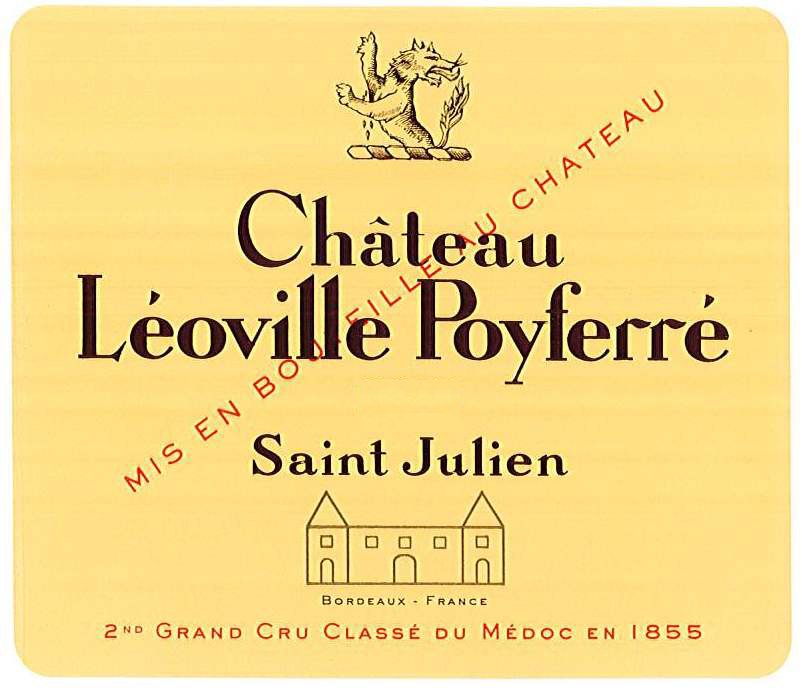Chateau Leoville Poyferre
2010
Blend
3% Cabernet Franc
61% Cabernet Sauvignon
30% Merlot
6% Petit Verdot
61% Cabernet Sauvignon
30% Merlot
6% Petit Verdot
Country
France
Region
Bordeaux
Appellation
Saint-Julien
UPC
0 15643 48935 8
Harvest
After precise plot-by-plot ripeness tests (sampling of 200 grapes per plot to analyse the potential alcoholic degree, acidity, pH, polyphenols, anthocya nin; berry tasting), it is atlast time to begin picking,on 1st October.
The Merlots are ready to be harvested. The grapes are incredibly small and of remarkable quality. Benefiting from the greater sun exposure, these smaller berries are also more concentrated In fruity aromas.
The Cabernets and Petit-Verdots need more time: we stop picking for a few days to allow the tannins in their pips to ripen fully.
The first grapes are picked on pt October and the last on 18th October 2010, 6 days later than in 2009. The same difference was observed regarding the dates of budbreak.
The Merlots are ready to be harvested. The grapes are incredibly small and of remarkable quality. Benefiting from the greater sun exposure, these smaller berries are also more concentrated In fruity aromas.
The Cabernets and Petit-Verdots need more time: we stop picking for a few days to allow the tannins in their pips to ripen fully.
The first grapes are picked on pt October and the last on 18th October 2010, 6 days later than in 2009. The same difference was observed regarding the dates of budbreak.
Vintage
A cold and wet winter,a hot and dry spring, then a hot, dry and sunny summer followed by beneficial rainfall in September.
These extreme weather conditions do not affect our healthy,resistant vines, solidly rooted in their well-balanced soil.
The excellent natural drainage and deep rooting of our vineyard ensure regularity in the growth cycle. For this 2010 harvest we are delighted to inaugurate our new truncated vats. Their varying capacities allow a plot-by-plot selection and their thermo-regulated double walls enable a prefermentary cold maceration without the use of dry ice
The inevitable comparison is made: after an exceptional vintage in 2009 with a similar climatic profile, can 2010 be even better?
These extreme weather conditions do not affect our healthy,resistant vines, solidly rooted in their well-balanced soil.
The excellent natural drainage and deep rooting of our vineyard ensure regularity in the growth cycle. For this 2010 harvest we are delighted to inaugurate our new truncated vats. Their varying capacities allow a plot-by-plot selection and their thermo-regulated double walls enable a prefermentary cold maceration without the use of dry ice
The inevitable comparison is made: after an exceptional vintage in 2009 with a similar climatic profile, can 2010 be even better?


